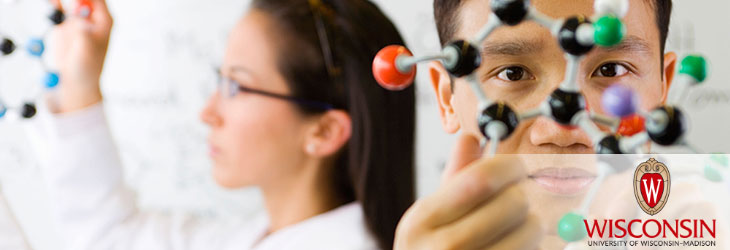Drug Discovery & Development

Novel Antibacterial Small Molecules
WARF: P07517US
Inventors: Helen Blackwell, Matthew Bowman, Joseph Stringer
The Wisconsin Alumni Research Foundation (WARF) is seeking commercial partners interested in developing a platform for screening compounds for antimicrobial activity and new compounds that are effective against Gram-positive bacteria.
Overview
As the incidence of antibiotic resistance among bacteria continues to rise, the discovery of new antibacterial compounds has become increasingly critical to fighting infectious disease. According to the Food and Drug Administration, approximately 70 percent of bacteria that cause infections in hospitals are resistant to at least one of the drugs commonly used to treat infections. Methicillin-resistant Staphylococcus aureus (MRSA) is a particularly worrisome example. Some bacteria are resistant to all approved antibiotics and must be treated with experimental and potentially toxic drugs. Novel scaffolds for creating new antibacterial compounds are needed.
Chalcones provide a potentially useful scaffold for making new compounds with antimicrobial activity. Chalcones are small molecules that naturally occur in many plants. They exhibit a wide range of biological activities, including antimicrobial activity. And their synthesis is relatively straightforward, making them adaptable to high throughput methods.
Chalcones provide a potentially useful scaffold for making new compounds with antimicrobial activity. Chalcones are small molecules that naturally occur in many plants. They exhibit a wide range of biological activities, including antimicrobial activity. And their synthesis is relatively straightforward, making them adaptable to high throughput methods.
The Invention
UW-Madison researchers have developed a versatile platform for screening compounds for antibacterial activity, along with new antibacterial agents that are effective against Gram-positive bacteria like methicillin-resistant S. aureus. The researchers used combinatorial synthesis methods to generate macroarrays comprising a library of chalcone-based small candidate molecules. These macroarrays use a Rink amide linker to attach the small molecules to a solid support. This allows additional chemical moieties to be covalently attached to the small molecules, further enhancing the diversity of the molecules that can be synthesized and screened. The Rink linker also results in the formation of an amide group on the small molecules that are released from the support, enhancing their water solubility and potentially their biological activity.
The resulting compound library was screened for antibacterial activity using an overlay technique, and the minimal inhibitory concentrations (MICs) of select compounds were quantified. Several antibacterial compounds were identified, including chalcone and chalcone derivatives such as alkylpyrimidine, aminopyrimidine and cyanopyridine. These compounds could be used to treat patients infected with bacteria, including drug resistant bacteria, and could also be used for sterilization and disinfection.
The resulting compound library was screened for antibacterial activity using an overlay technique, and the minimal inhibitory concentrations (MICs) of select compounds were quantified. Several antibacterial compounds were identified, including chalcone and chalcone derivatives such as alkylpyrimidine, aminopyrimidine and cyanopyridine. These compounds could be used to treat patients infected with bacteria, including drug resistant bacteria, and could also be used for sterilization and disinfection.
Applications
- Treating bacterial infections, including those caused by MRSA
- Screening compounds for other antimicrobial activity, including antifungal activity
Key Benefits
- Provides novel antibacterial agents for clinical applications
- Effective against S. aureus and other Gram-positive bacteria, including drug resistant strains
- Antibacterial compounds have low hemolytic activity and MICs that compare favorably with current therapies.
- Macroarray platform allows the qualitative and/or quantitative characterization of the antibacterial properties of several hundred candidate compounds in a relatively short time.
- Rink linker allows additional moieties to be attached to the small molecules, enhancing and expanding their biological activity.
- Using the Rink linker to attach the compounds to the support provides improved mechanical properties for on-support screening.
Additional Information
For More Information About the Inventors
Tech Fields
For current licensing status, please contact Rafael Diaz at [javascript protected email address] or 608-960-9847